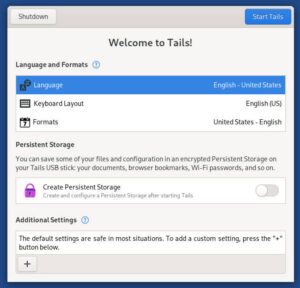TuxCare has partnered with UK-based Cloudimg, to bring its customers TuxCare Endless Lifecycle Support for keeping end-of-life Linux distributions supported.

Don’t expect much more than a shrug on Tuesday when TuxCare and UK-based Cloudimg (generally rendered all lower case) officially announce that going forward the Brit company will be offering its customers TuxCare Endless Lifecycle Support services. What this means is that Cloudimg’s customers will be able to continue to use many Linux distros long beyond their official expiration date because TuxCare will keep them supported.
Not so long ago, continuing to use an officially dead operating system to run mission critical loads would’ve been considered a big no-no under nearly every circumstance, but these days the practice of running on expired code has become so commonplace that CentOS 7, which reached its end-of-life in June, continues to be one of the most used distros on the planet.
TuxCare, which is owned by CloudLinux (the folks behind AlmaLinux), knows all about that. It’s in the business of supplying patches that keep Linux operating systems that are supposed to be dead and buried safe to run. Cloudimg helps companies with their cloud deployments, and is one of the largest providers of Amazon Machine Images in AWS Marketplace.
“This partnership with TuxCare allows us to address a critical challenge for our customers,” Cloudimg’s CTO, George Harrison, said in a statement. “Many of our users continue to rely on popular operating systems like CentOS 7 and Ubuntu 18.04 for their stability and performance. TuxCare’s Endless Lifecycle Support ensures these systems remain secure and operational well beyond their vendor-supported lifecycles. We’re thrilled to offer this essential service to our customers, along with exclusive discounted pricing.”
This summer, just as CentOS 7 was approaching the end, I spoke with Joao Correia, a technical evangelist at TuxCare, who told me that there’s are a variety of reasons why enterprises continue to run outdated operating systems, most of them being variations of the expression, “if it’s not broke, don’t fix it.”
“If your whole fleet is running on Centos 6, for example, and you have 10,000 systems, it’s going to be disruptive, it’s going to be very costly, and it’s going to take a lot of time,” he said. “You’re going to have to do a lot of preparation work, you’re going to have to do a lot of testing, and you’ll need to make sure that not only the operating systems are running correctly, but also your applications and your workloads. Simple stuff like libraries being renamed — and we know that happens — files not being in the same place as the scripts expected, and different directories being in play can all break your existing tooling and break your existing workloads, so that’s the practical reason.”
He pointed out that going through all that trouble becomes even less attractive when you consider that it’s part of an endless wash-rinse-repeat cycle.
“At the end of the day you might just not want to move your infrastructure,” he said. “You might not want to work and go through all that hassle, when five or six years down the line you’ll have to repeat the same process again.”
There are other reasons why companies don’t migrate, not the least of which are C-suite suits who don’t understand why they should spend the money.
“Most CEOs don’t see the value in changes like that,” Correia said. “Most C-level people will not approve the expenditure that comes with something like that, simply because they don’t understand the benefits they might reap from it, and it’s hard for the IT people to justify, ‘OK, I need you guys to allocate $50,000 to buy new equipment or to allocate new people to this,’ just to stay in the same place. Everything is working, but we still need to spend the money to change something in the chain: that’s very difficult to grasp.”
This new deal between TuxCare and Cloudimg means that companies that are running older versions of Linux in public clouds such as Amazon Web Services can still find support, which not only helps protect them from the likes of ransomware attacks, but which is also necessary for companies in regulated industries who have certifications that they need to keep valid.
Christine Hall has been a journalist since 1971. In 2001, she began writing a weekly consumer computer column and started covering Linux and FOSS in 2002 after making the switch to GNU/Linux. Follow her on Twitter: @BrideOfLinux






